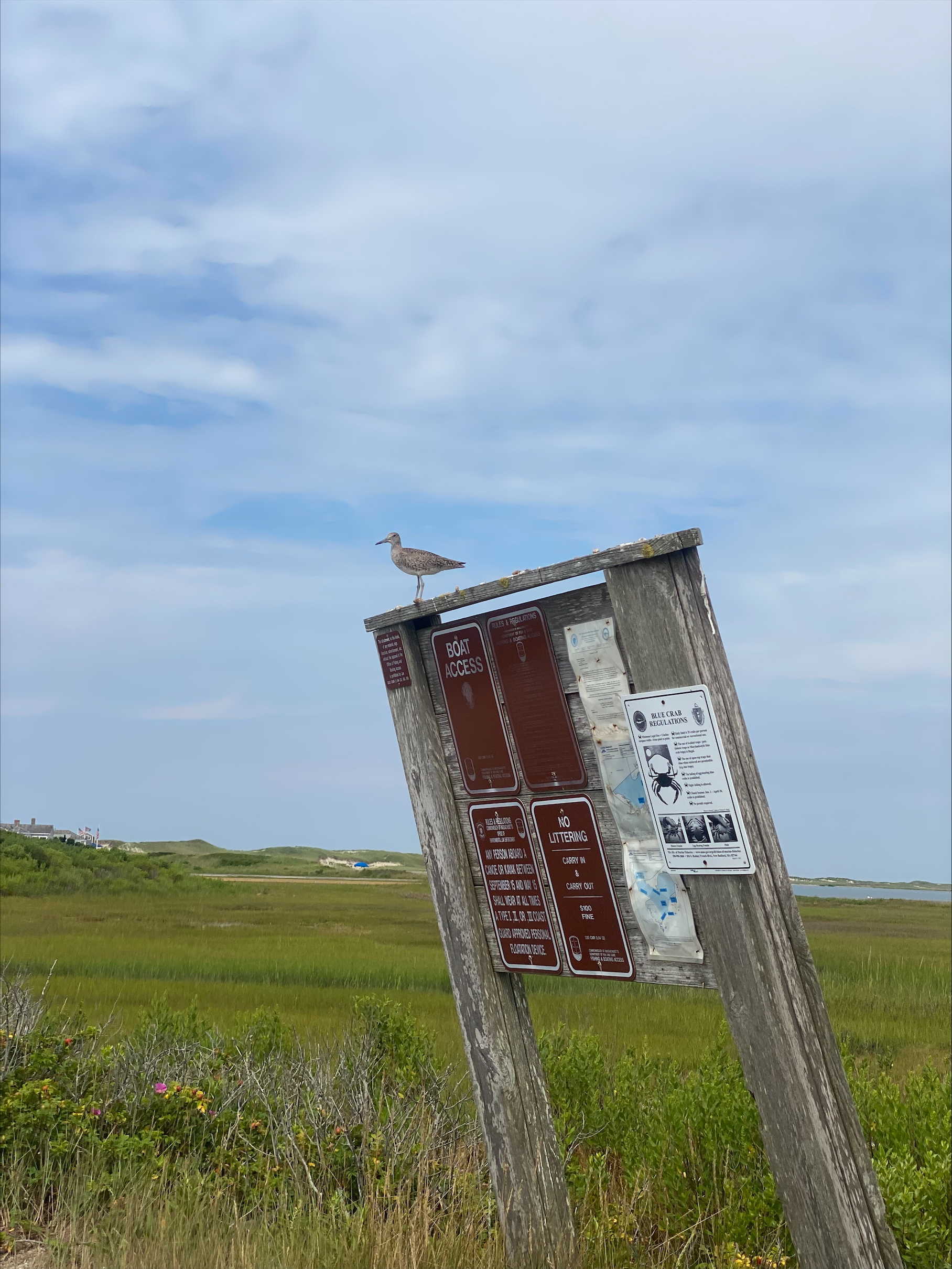Keep Calm and Bird On: August 2025
“If you don’t look, you don’t see. You have to go and look.”
-Edith Andrews

August is a great time to look for shorebirds. Yes, they are mostly brown and white in varying mixtures. But don’t let that intimidate you. Think of it as welcome relief from the struggle of plumage detail and look at location, size, and behavior, followed by bill and leg color. Admittedly, a telescope is best for seeing the latter, but sorting by location and behavior makes a good start.
Sanderlings are smallish-medium size birds of the ocean beach. Almost constantly active, they run like wind-up toys, feeding in the swash, probing with black bills and legs. They chase after a retreating wave, and scurry back up as the next one comes in. They often rest on one leg, tucking the other up out of sight. Be skeptical of reports of one-legged Sanderlings.
On calm flats and sandbars in bays and harbors, sort them first by size. Godwits (a rare and lucky sight) are biggest, with upcurving two-tone bills. Next are Whimbrel with crescent-shaped down-curved bills. Least Sandpipers are smallest and brownest. Dowitchers are a chubby medium. Think of them as the “sewing-machine” birds. They get into a line in or at water’s edge, mechanically moving their long straight bills up and down, as if stitching a hem of water. Yellowlegs, Greater and Lesser, actually do have yellow legs and sweep with thin bills in the water. Ruddy Turnstones, once described to me as “looking like a slice of marbled rye” (although possibly ‘cinnamon toast’ might better incorporate their ‘ruddy’ plumage) turn stones and flip shells over to seek the goodies beneath. Oystercatchers are unmistakable with their large red bill; Willets have a similar wing pattern but are otherwise brownish-greyish all over. White-rumped Sandpipers have white rumps visible in flight. Walking or running, Spotted Sandpipers bob their tails. Plovers have distinctive style: run-stop; run-stop; run-stop-look, peck. Black-bellied are largest, and if still in breeding plumage, have black tummies. Semi-palmated Plover are the color of wet mud; Piping Plover, the color of dry sand.
Shorebirds not at the shore include American Woodcock, Upland and Buff-breasted Sandpiper—the latter does have a buffy breast, the color of light toast.
Recent Posts




